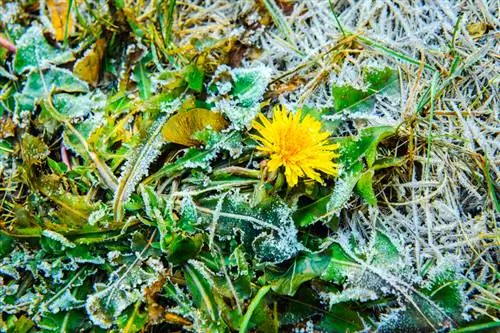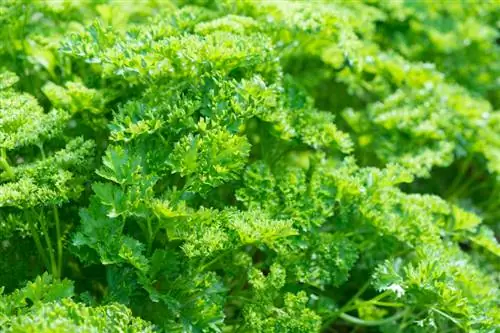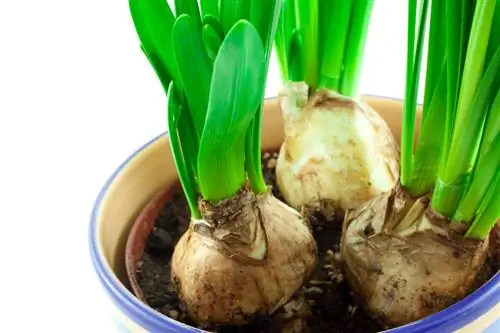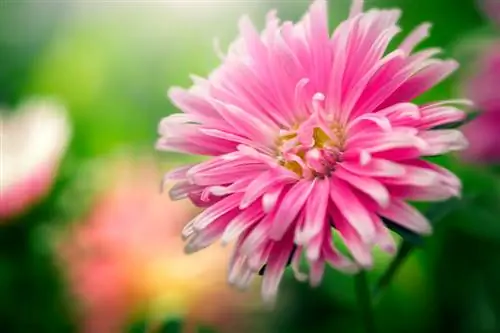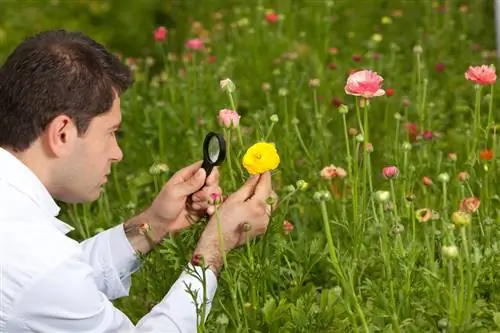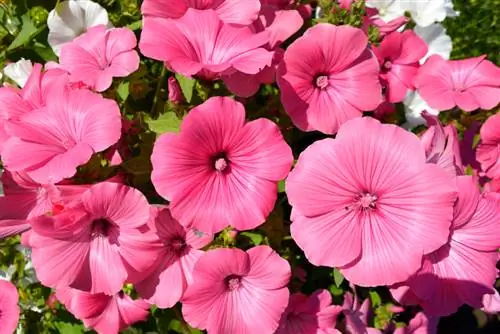- Author admin [email protected].
- Public 2023-12-16 16:46.
- Last modified 2025-06-01 06:02.
Dandelion - perhaps you also know it by the names cowflower, dandelion or buttercup? This much-named and widely known wild plant gives many gardeners in this country worry lines because it is difficult to control. Does it die after a year or is it perennial?
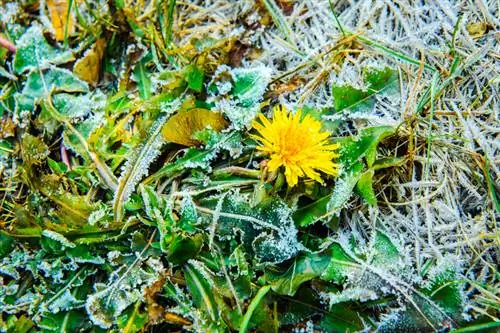
Is the dandelion perennial?
The dandelion is a plant that can be annual, biennial or even three-year-old. Its lifespan depends on factors such as location, soil conditions and dandelion species. The plant survives frost thanks to its robust taproot.
A plant that can be annual to perennial
The dandelion can be an annual, a biennial or a three-year-old. The plant then dies. The lifespan depends, among other things, on the location, but also on the composition of the soil. The type of dandelion is also crucial.
Frost - no problem
Frost is not a problem for dandelions in our latitudes. The leaves die off. But the long and strong taproot is well prepared. It survives in the soil and sprouts new leaves in spring.
Only if you have grown a dandelion in a pot should you protect the plant over the winter, for example by placing it against the protective wall of the house and wrapping it in the root area with fleece so that the root does not freeze.
First a rosette forms
The leaves emerge in spring from the taproot, which is up to 1 m long (in rare exceptional cases up to 2 m). They even persist in mild winters. They stand together in a rosette, which characterizes the appearance of dandelions in the early spring.
The leaves can often be seen from March if it is warm enough. The individual leaves are elongated and strongly toothed. Only when the flowering period begins does a stem up to 60 cm high shoot up on which the flower sits.
Followed by the flower and the seeds - already in the first year
The dandelion produces its flowers in its first year of life:
- Flowering period: April to May
- often followed by a rebloom
- Seeds emerge a few weeks later
- Seeds remain viable for a long time
- Germination and reproduction within one year
Tip
When removing the plant, it is not enough to remove the flowers or seeds. The root would survive and sprout again. To really get rid of dandelions, you should remove the long taproot!

